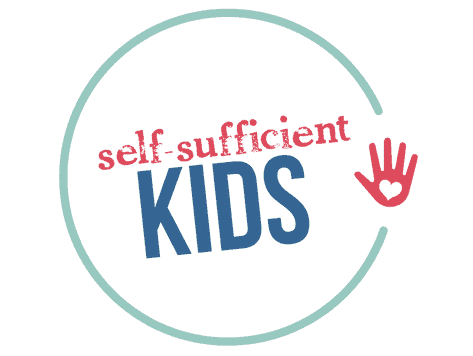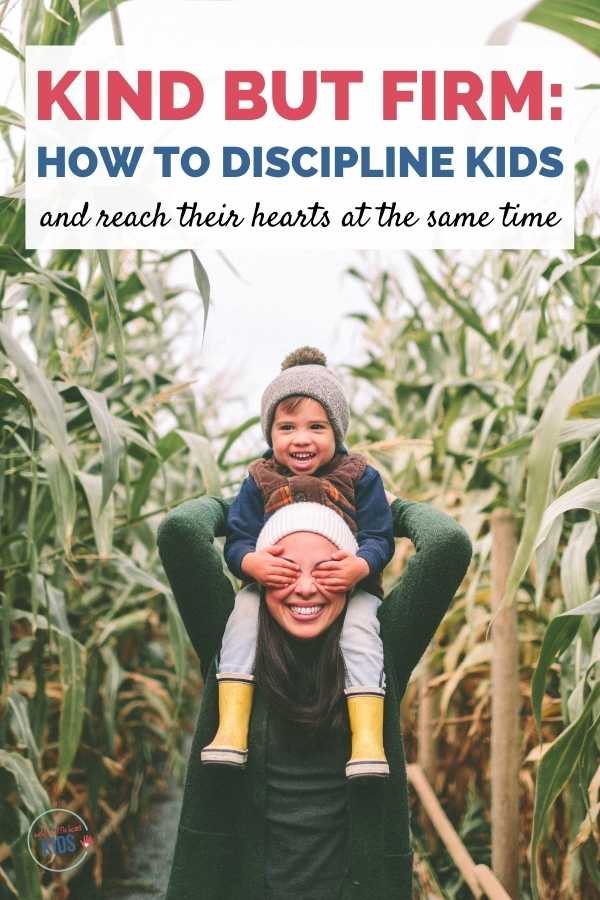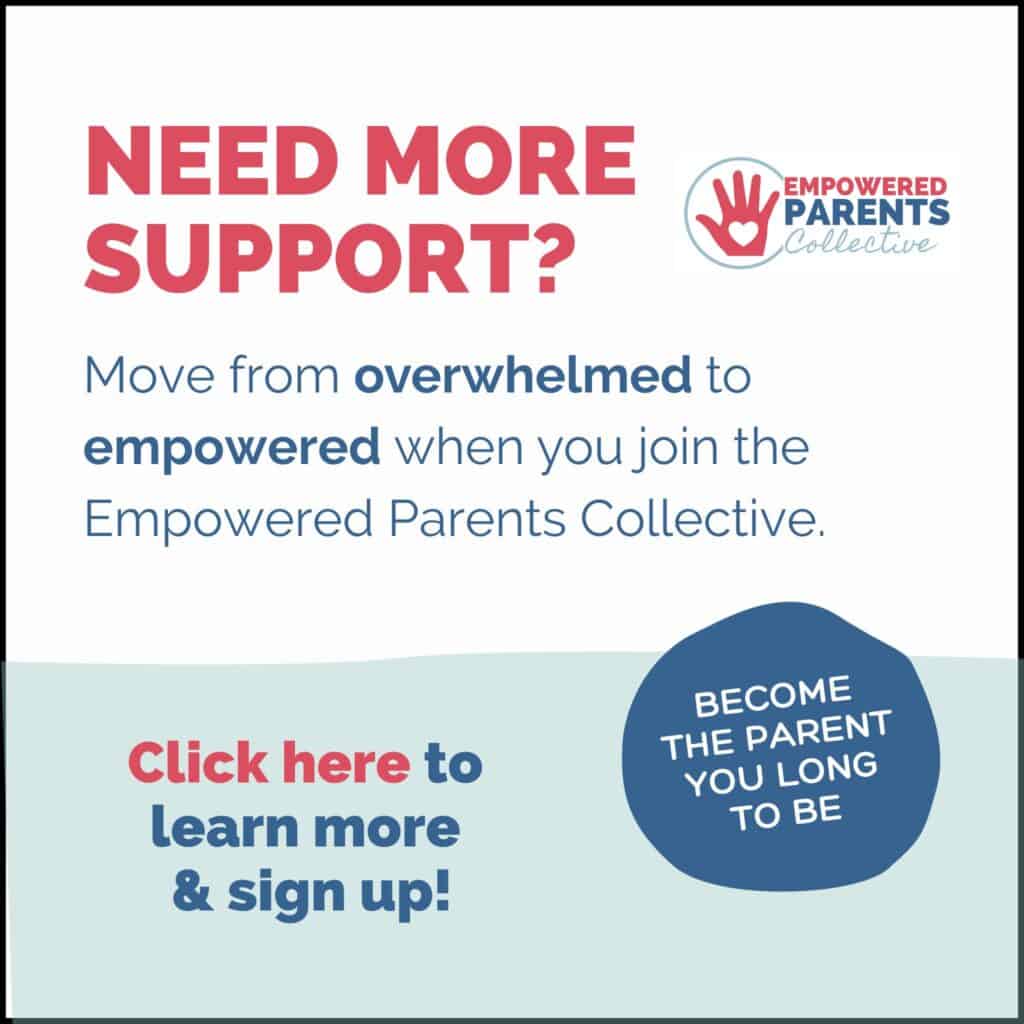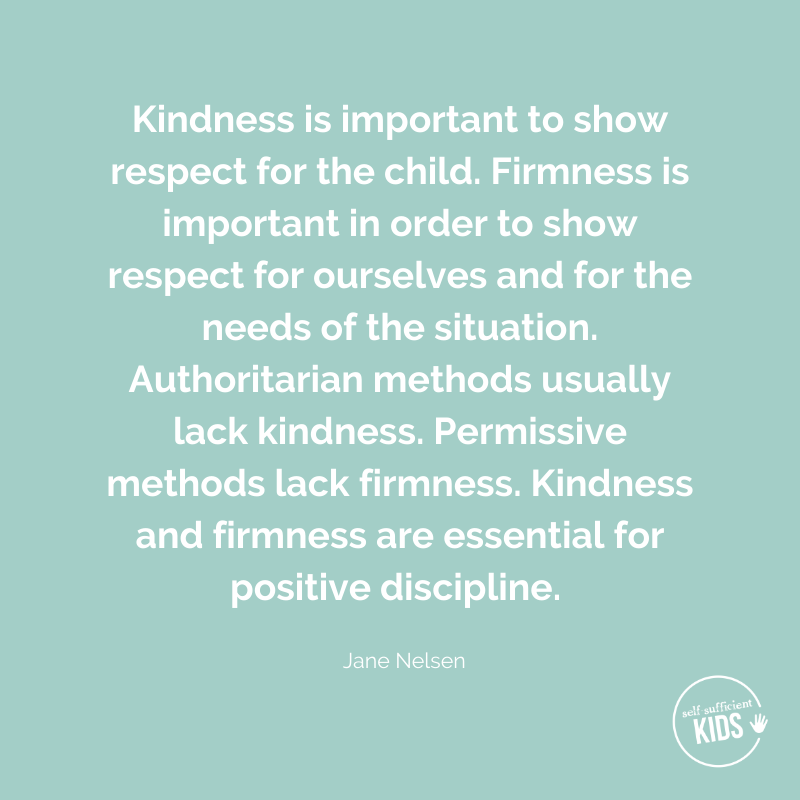How to Discipline Kids While Reaching Their Hearts at the Same Time
Kind but firm parenting involves setting clear limits for kids while also maintaining a strong, healthy relationship. Here’s how to do it.

(This post contains affiliate links. If you click on a link and make a purchase, I’ll receive a commission at no extra cost to you.)
With a big smile on his face, your five-year-old takes a handful of sand, stands up, and gleefully throws it into the air. He’s in awe over the way the grains scatter in the breeze and eventually fall to the ground.
The problem: you’re at a local playground and six other children are playing nearby. Close enough that they could easily be hit by the falling sand.
Horrified, you fear the other children are covered in sand or, worse, have gotten sand in their eyes. Not to mention the panic you feel about what other parents think of your child’s behavior.
You know it’s important to discipline your son about this behavior. But filled with fear and anxiety, you wonder what’s the best approach. Should you scold him? Have him sit in a timeout? Take him home?
With other parents looking on, it feels like you need to make a big statement to show your remorse for what just happened to their kids.
More than anything, though, you want your child to understand that what he did was wrong, to learn from his mistake, and to be more responsible. You also want to maintain the strong, loving bond you cherish with him.
Is all of this possible?
Your ultimate goal as a parent: to teach
In situations like this, stepping back and thinking about what you really intend to accomplish when parenting your kids can be helpful.
In this case, you want to teach your son the appropriate way to behave and why throwing sand isn’t considerate and also potentially harmful to the other kids around him.
The challenge for most parents is how to do this.
What’s the most effective way to get these messages across to our children so they eventually know how to do better on their own?
Most of us believe that punishing a child for wrongdoing is what gets the message through. We think that only by making a big statement and causing suffering will behavior change.
But research shows that punishment never really teaches kids, even though our culture continues to suggest it will. Punishing kids only makes a child feel bad about himself or want to take revenge on the perpetrator.
Why punishment, consequences, and time outs don’t teach
It’s helpful to consider your child’s mindset the moment he threw the sand. Was your son intentionally throwing sand to hurt others? Or at five years old, is he simply unaware of the impact of his actions?
Most likely, your son didn’t intend to hurt anyone but is simply unaware of the consequences behind his actions – making it clear that what your son needs more than anything is to be taught the appropriate way to behave.
Having your son sit in a time-out won’t actually teach him what he needs to know to behave better, even though it might stop the sand throwing in the short-term.
Scolding your son will certainly make him feel bad but still doesn’t help him understand why what he did was wrong.
And leaving the playground, with no other intermediary step, will end the bad behavior but will likely be confusing to your son.
None of these actions teach kids why what they did was wrong. And kids are only able to do better if they understand their actions and how to be better.
What will help your son better understand is your coaching and guidance in what is and isn’t appropriate behavior and why.
But first, kids, like adults, are more likely to be open to instruction from someone with whom they feel a connection.
See Related: The Difference Between Punishment and Discipline and Why it Matters
The power of connecting with our kids
“You have to reach the heart before you can reach the head.”
Back in the 1980s, Carter Bayton made this statement after working with a group of third-grade boys who were so disruptive it was believed they simply couldn’t be educated in a regular classroom.
After working with these boys for six months, Carter saw such improvement that he arranged for the boys to challenge a regular class to a math competition. Carter’s boys won.
Carter says he used a number of methods to get to these boys and improve their behavior. But foundational, he said, was reaching their hearts before reaching their minds.
Connection is key for anyone who wants to teach. When a child or adult feels a connection to the person trying to teach them, they feel respected, listened to, and acknowledged. This makes them more open to the lessons and discipline that person will share with them.
Few of us are willing to listen to or learn from someone who is disrespectful or minimizes our needs, feelings, and emotions.
This is why in addition to teaching and coaching our kids, we also have to show them kindness and respect.
See related: 5 Ways to Connect With Your Kids (That Actually Work)
Why being firm is just as important as being kind
While demonstrating kindness and respect with our children, we also need to be firm with our coaching if we really want them to progress.
Any teacher knows that if a lesson isn’t consistently reinforced and with follow-through, the lesson will be lost on kids.
The rules of mathematics, for example, would be impossible to learn if a teacher presented the rule of addition but then, when a child tried to practice this rule on her own, she was allowed to deviate from the rule or do whatever she wanted.
No child can learn addition this way, and similarly, no child can learn what appropriate behavior is without a parent or adult consistently reminding the child of the rules and boundaries that are important to follow.
Holding kids accountable to these rules is loving. It shows our kids that we want them to know how to be their best selves not only around us but in society in general.
And as we kindly coach our kids toward a better understanding of these boundaries and acceptable ways to behave, children begin to naturally understand right from wrong and no longer need us to hold them accountable.
The magical combination of kind but firm discipline
“Children do better when they feel better.”
Jane Nelson, author of Positive Discipline, followed up this statement by saying “Where did we ever get the crazy idea that to make children do better, first we have to make them feel worse?”
Since our ultimate goal as parents is to teach, the way to effectively make this happen is through kind but firm discipline.
We need to be kind to our children – by showing them respect, listening to their concerns, and acknowledging their emotions – so we can build trust with them and open them up to learning.
We also need to be firm with our children – by consistently setting boundaries and expectations for proper behavior – to guide them toward being the best person they can be.
If we’re just kind to our children but not firm, our children miss out on important lessons they need to be successful self-sufficient children and adults in society.
On the other hand, if we’re just firm with our children but not kind, they’re likely to not listen to or learn from our message, however well-intentioned it is. And instead, they’ll either feel poorly about themselves or feel revengeful.
But isn’t being kind to a misbehaving child permissive?
Most parents grapple with this question.
They think of kindness as letting kids “get away with” whatever they’ve done. They also equate kindness as being permissive, which is the last thing they want to be.
Certainly, kindness without firmness is being permissive. It sends the message that kids can do whatever they want no matter how it affects others in their lives. This mentality can lead to a sense of entitlement and remove any sense of respect a child has for their parent.
But when a parent is both kind and firm, the child isn’t getting away with anything. The issue at hand is being addressed. And it’s being addressed in the best way possible for the child to learn and grow.
Kindness, in this case, shows the child respect. This kind of respect also bolsters the child’s self-esteem, which in and of itself encourages better behavior.
How to be both kind and firm
It may take some practice to be both kind and firm with your kids.
When faced with a stressful situation, like the one at the playground, the most natural response for any parent is to immediately scold.
(And even for those of us who understand the value of being kind and firm, we still find ourselves occasionally jumping into scolding mode even though we know better!)
Don’t be too hard on yourself if you find yourself doing this. It can take practice to suppress this instinct. And even if you do scold, there’s still time to regroup and go through the steps of kind and firm discipline. Which are:
Step One: Validate Feelings
Start by validating the feelings of your child or demonstrate understanding.
In the case of the sandbox, you could start by acknowledging to your son that he thought it was interesting to see the sand fly through the air. This acknowledgment lets him know that you “get” why he did what he did, which will make him feel safe and open to talking further.
And since this motive of your son was innocent, acknowledging this intention isn’t condoning the bad consequences of the behavior.
Step Two: State the Rule or Boundary
State the rule or boundary your child needs to follow or understand. If possible ask your child questions first to see if he or she understands what went wrong. Asking a question not only shows respect but also gets kids to think for themselves which increases their ability to learn from the situation.
In the case of the sandbox, you could ask your son why it might be a bad idea to throw sand in the air, not only around other kids but in general. If he doesn’t have an answer, you can provide one for him.
It’s also reasonable to warn him that because thrown sand is such a danger to others, you’ll have to leave the playground if it happens again. This is setting a respectful boundary since you’ve made him aware of the consequence ahead of time.
Step Three: Provide Choices (if Necessary)
A third step isn’t always necessary but in some cases, a child may still not want to follow the rule or boundary being presented. In this case, a parent can let the child decide between two choices. That way, the parent is still being firm but is respectful of the child by letting her choose.
For example, if your child doesn’t want to get dressed, you could say,: “I know you don’t enjoy getting dressed. Do you want the pink shirt or the blue?” If the child doesn’t want either choice, it’s time to say, “Those are the only options available so you’ll have to choose one.”
See related: Why Your Child is Constantly Misbehaving and What to Do About it
Examples of kind but firm statements
Here are a few statements that demonstrate how parents can be both kind and firm at the same time:
“I love you and the answer is no.”
“I’m glad you enjoy playing with blocks. But it’s naptime now, so we need to go upstairs.”
“I know you don’t want to go to bed. Which book do you want to read before bed, Goodnight Moon or Snowy Day?”
“You want to keep playing, but we need to go grocery shopping. Do you want to bring your dinosaur book or drawing pad in the car with you?”
“You don’t want to brush your hair. We can do it together.”
These statements are merely examples. Many times being kind and firm means a back and forth conversation with your child. And in some cases, it means having that conversation more than once until the lesson is learned.
Letting go of the perception of others
One of the biggest stumbling blocks for parents wanting to be kind but firm with their children is the perception of others.
Whether it’s a grandparent, teacher, friend, or other parents at a playground, adults have a variety of opinions about what’s important when disciplining kids.
Many adults feel it’s important to come down strong on punishment and consequences with kids for fear of being too permissive and raising a spoiled brat.
Other parents worry that they’ll ruin their relationship with their child if they’re too harsh, so they avoid discipline altogether.
These adults more often than not have children’s best intentions in mind. They want only the best for kids and want children to grow up to be the best adult they can be.
And these parents may judge (silently or out loud) any parent who disciplines their child differently than their philosophy recommends.
For anyone who falls into the punishment camp of parenting, your kind but firm discipline will likely be seen as being too weak. And for anyone who’s hesitant to enforce rules, your discipline will seem too harsh.
Parenting is hard. And being judged comes with its own range of emotions and anxieties.
It’s important to keep your ultimate goal as a parent in mind: to lead your child toward a life where they know right from wrong, appropriate behavior from inappropriate, and have high self-esteem and a strong relationship with their parents to boot.
Research shows that being both kind and firm is the best and only way to accomplish this, so as challenging as it may be, stick to the parenting you know will best benefit your kids even if others (mistakenly) disapprove.
See related:
Why Positive Parenting is Essential for Raising Self-Sufficient Kids
How to Parent (and Survive!) Your Strong-Willed Child
5 Essential Family Rules Every Kid Needs
Siblings Without Rivalry: How to End Sibling Fights and Bring Peace to Your Home
Why Imperfect Parents Make the Best Parents
>>> Interested in learning more about the benefits of positive discipline? Click here to learn more.
What to do next…
1. Subscribe to Self-Sufficient Kids’ email list.
Like what you read here and want to learn more? Every Thursday I’ll send you one parenting tip about raising self-sufficient kids and creating the peaceful relationship you yearn to have with your child. Click here to sign up.
2. Take one of my quizzes!
Find out if you’re raising a self-sufficient kid (click here) or if you’re doing too much for your kids (click here). At the end of each quiz, you’ll be asked to provide your email address to see the results.
3. Get your kids started on chores.
Learn how to get your child started on chores (& keep them motivated + avoid power struggles) by enrolling in my Get Your Kids Successfully Started on Chores course. Click here to learn more and sign up.

About Kerry Flatley
Hi! I’m Kerry, the mother of two girls and a certified parent educator. I believe it is possible for parents to have a supportive, loving, and warm relationship with their kids while raising them to be independent and ultimately self-sufficient. Over the years, I’ve read numerous books and articles that support this belief and I’ve put these ideas into practice with my own kids. Read more about me and Self-Sufficient Kids here.




